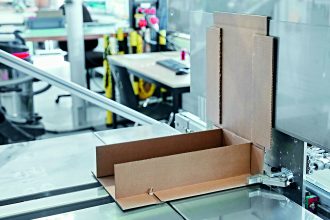
Leading Your Team Through Operational Change with Confidence
Why Change Management Matters in Automation
Investing in SLAM (Scan, Label, Apply, Manifest) automation is a major milestone for any facility looking to streamline the final 100 feet of its operations. But technology alone isn’t enough. How you manage the transition can make or break its success.
Change Management is the framework that helps your people adapt to new workflows, tools, and expectations. When done well, it boosts adoption, reduces errors, and builds long-term buy-in from your team.
Communicate the Why Behind the Change
Before introducing a single piece of equipment, explain the purpose behind the shift. Is the business growing faster than manual processes can keep up? Are you seeing bottlenecks that automation can solve?
Be clear that automation isn’t about replacing people. It’s about equipping them to do their jobs more efficiently and sustainably. Framing the change as an investment in your team’s success can go a long way in overcoming hesitation.
Build a Foundation for Success
Rolling out SLAM automation isn’t just about installing equipment. It’s about preparing people, processes, and expectations. One of the most important elements of change management is laying the groundwork before anything physical changes on the floor.
Start by mapping out your transition strategy. What specific shifts will your team experience, both in terms of daily responsibilities and implementation? Early clarity helps reduce uncertainty and builds trust.
Next, identify champions within your staff. The team members who are open to change and can serve as advocates for the value of automation on the floor. Their influence can smooth over resistance and model positive engagement within the new system.
Ongoing communication is also essential. Don’t wait until installation day to involve your staff. Share updates regularly, solicit feedback, and make sure people feel heard. The more you engage your team before the changes, the more invested they’ll be in its success.
To summarize, a strong foundation includes:
- A clear transition plan outlining what changes and when
- Team leads or internal champions who help drive positive engagement
- Consistent communication that keeps staff informed and included
Prepare for Hiccups
Even the most carefully planned automation rollouts experience turbulence. Technical hiccups, like any new machine, are bound to happen in the early days. It’s important to prepare your staff for these disruptions—not to create fear, but to build resilience.
By acknowledging that issues are part of the learning process, you create a culture of problem-solving instead of blaming. Empower your operators with basic troubleshooting knowledge and ensure there’s a clear plan for escalating more complex issues. Transparency and preparation help build confidence.
Key actions to prepare your team:
- Set expectation early that minor disruptions are normal
- Provide basic troubleshooting skills to frontline operators in advance
- Establish a plan for support and escalation
Invest in Incremental Training
SLAM automation often increases the pace and precision of work. Without adequate training, that shift can overwhelm staff who are used to slower, manual processes. Instead of a single ‘big bang’ training session, consider phased instruction that lets your team build skills gradually.
Shadowing experienced users, practicing in controlled runs, and using realistic volumes for testing can all reduce stress and increase proficiency. Training should be hands-on, ongoing, and adapted to your team’s pace of learning.
Effective training strategies include:
- Phased rollouts that let employees adjust gradually
- Shadow shifts or trial runs with real package volume
- Practical, hands-on training with live feedback
Don’t Overlook Ergonomics and Job Design
Change management isn’t only about process. It’s about people. High-volume, repetitive work on machines can lead to fatigue or disengagement if not managed thoughtfully. Ignoring these human needs can undermine even the most sophisticated automation strategy.
Encourage job rotation to reduce repetitive strain and keep tasks varied. Actively gather feedback from operators during and after the transition to surface pain points early. Look for small, meaningful adjustments that enhance satisfaction without slowing performance.
Sustaining momentum requires more than technical uptime. It demands attention to the physical and emotional well-being of your team. When employees feel supported, they stay engaged and empowered to succeed.
Change Management is Ongoing
Successful change doesn’t end once the system goes live. The most effective operations leaders treat it as a continuous process; one that evolves with team feedback, operational data, and on-the-ground experience.
Continue to revisit your workflows, update documentation, and build feedback loops into your operations. Change fatigue is real but so is change fluency. By staying committed to improving, you’ll build a culture that embraces progress instead of resisting it.
Want to Learn More?
Explore additional SLAM resources through our blog. Work in the SLAM space? Our group brings together solution providers to learn from each other and move the industry forward. If that sounds like your kind of community, come join us.



